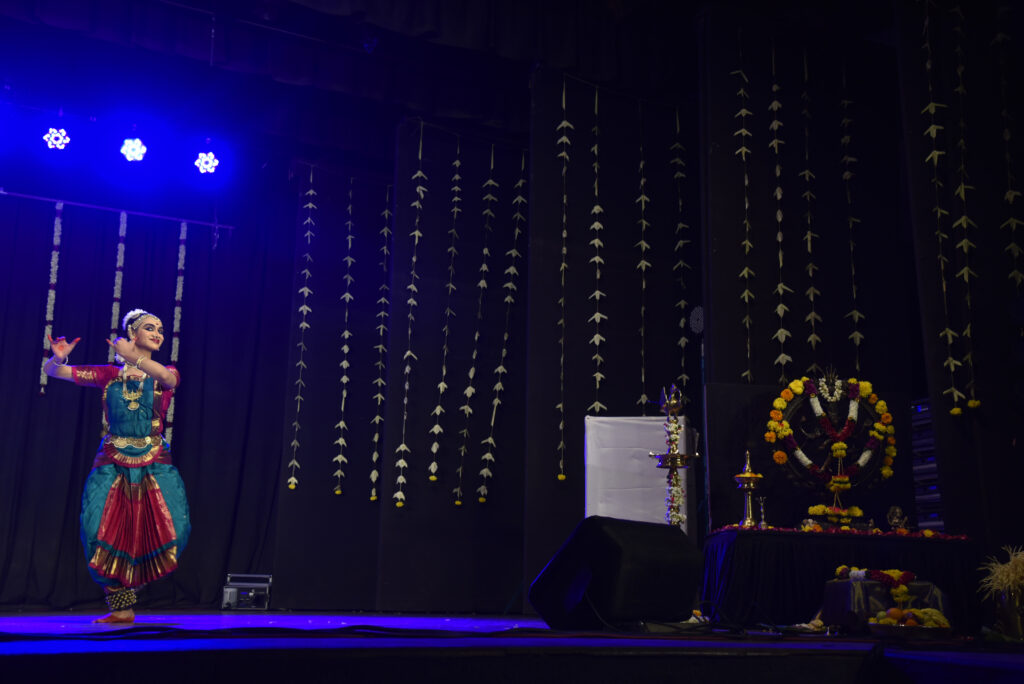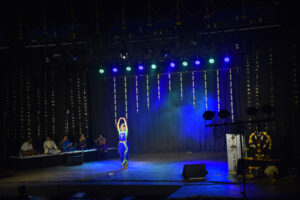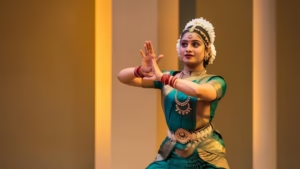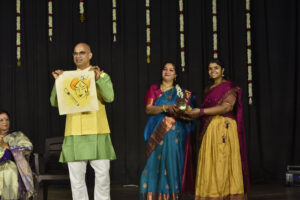The day a young dancer performs their Arangetram is more than just a recital—it’s a sacred passage into the world of classical performance, a milestone that marks years of discipline, dedication, and cultural immersion. Whether you’re a parent, a teacher, or the dancer preparing for the big day, understanding how to plan and execute a successful Arangetram ceremony ensures that it remains an unforgettable experience for everyone involved.
Let’s explore what makes this event special, how to prepare, and what techniques make the performance and ceremony truly stand out.
Understanding the Arangetram Meaning
Before diving into planning tips, it’s essential to grasp the meaning of the word Arangetram. The word “Arangetram” originates from Tamil, where “Arangam” means stage and “Etram” means ascent. Thus, Arangetram literally means “ascending the stage.” It signifies the dancer’s readiness to perform independently after years of rigorous training under a Guru.
Arangetram is also known as rangapravesha or rangapravesham in other dance forms and south indian languages. It is the debut solo performance that not only showcases the technical prowess and expressive depth of the dancer but also reflects their spiritual growth and connection to the art form.
So, what is Bharatanatyam Arangetram specifically? It is the first solo stage performance by a student of Bharatanatyam—a South Indian classical dance known for its intricate movements, rhythmic footwork, expressive gestures, and storytelling elements. The event is both a personal celebration and a public affirmation of the dancer’s skill and spiritual maturity.
Start Early: Laying the Foundation
An Arangetram is not something that can be pulled together in a few weeks. Ideally, planning should begin at least 6 to 12 months in advance. The earlier you start, the more choices you’ll have when it comes to venue, orchestra, costume designers, and other resources. This buffer also allows time for rehearsals, costume trials, and addressing unforeseen challenges.
Creating a comprehensive checklist helps streamline the planning process. Include key elements like venue booking, orchestra selection, costume design, photography, invitations, hospitality arrangements, and of course, regular rehearsals with your Guru and musicians.
Selecting the Right Venue
The venue sets the tone for the entire event. Choose a space that reflects the cultural richness of the Arangetram and comfortably accommodates your guest list. It should also be centrally located and easily accessible for the audience that you wish to attract. Arangetram should also be scheduled ideally on a weekend in order to attract maximum attendance.
Make sure the venue allows enough time for a technical rehearsal. Check facilities like dressing rooms, green rooms, restrooms, and catering support in advance. Some performers also consider temple halls or cultural centers for a more spiritual or traditional ambiance.
Working with the Orchestra and Guru
Live music enhances the authenticity and emotional depth of the performance. Most Arangetram performances feature a team of live musicians—a vocalist, nattuvanar (dance conductor), mridangam artist (percussion), violinist, and flutist.
It is vital that the dancer rehearses with the orchestra multiple times before the performance. This ensures coordination and allows the dancer to fine-tune their expressions and footwork to match the musical nuances.
The Guru plays a central role—not only in training the dancer but also in guiding the choreography, costume design, and performance sequencing. Their blessings and presence on stage lend a deeper spiritual layer to the ceremony.
Curating the Dance Repertoire
A traditional Bharatanatyam Arangetram typically includes the following sequence:
- Pushpanjali – An invocation piece
- Alarippu – A pure dance item (a precursor)
- Jatiswaram / Thodayamangalam – A pure dance item (the real thing)
- Shabdam – A piece combining rhythm and expression
- Varnam – The centrepiece showcasing the dancer’s stamina, expressions, and storytelling skills
- Padams / Javalis – Expressive pieces exploring emotions (Abhinaya)
- Thillana – A vibrant rhythmic finale
- Mangalam – A concluding blessing
This sequence can be customized based on the dancer’s strengths and the Guru’s recommendations. Focus on pieces that best showcase the dancer’s versatility—be it rhythm, grace, emotion, or storytelling.
Costumes and Jewelry: Traditional Elegance
Costumes play a key visual role in enhancing the performance. A typical Arangetram ceremony involves about 2-4 costume changes to elevate the visual appeal of each dance. These costumes are also creatively stitched to various styles to enhance the variety.
Work with experienced designers who understand the nuances of Bharatanatyam outfits. Pay attention to fit, flexibility, and comfort. The jewelry (temple jewelry sets), hair accessories, and flowers must be coordinated with the costume and securely fastened.
Photography sessions for costume trials are helpful and can also be used for the event’s invitation design and social media promotions.
Makeup and Hairstyling
Stage makeup for Arangetram is different from everyday makeup. It is designed to highlight facial expressions and features under strong stage lighting. A professional makeup artist familiar with classical dance is essential.
Hairstyling typically includes a braid adorned with jasmine flowers, temple ornaments, and a decorative bun. Ensure the style is comfortable and does not interfere with the dancer’s movement or balance.
Invitations and Guest Management
Design invitations that reflect the elegance and sacredness of the event. Include details like:
- Dancer’s name and Guru’s name
- Date and time
- Venue address
- RSVP contact
Digital invitations via WhatsApp, email, and social media are practical and budget-friendly. Physical cards can be reserved for close family and VIP guests. Create a guest list early, and plan seating arrangements, parking logistics, and hospitality (snacks, water, dinner) in advance.
Some families choose to include a printed Arangetram program booklet, which introduces the dance pieces, the dancer’s journey, the musicians, and acknowledgments.
Rehearsals and Technical Run-Through
Technical rehearsals should ideally take place at the actual venue, with full costume, makeup, music, and if possible, the lighting team present. This helps the dancer get used to the stage layout, lighting intensity, sound levels, and overall performance flow, reducing last-minute jitters. A separate dress rehearsal at home or in the studio is equally important to catch any costume or jewellery issues in advance and build confidence through repetition. It’s also worth paying close attention to stage decor—it should elevate the visual experience without overwhelming it. Simple, well-thought-out elements that match the theme can enhance the performance, but cluttered or overly elaborate setups can end up stealing focus from the dancer. Balance is key.
The Day of the Arangetram
On the performance day, keep the schedule light. A well-rested dancer performs with energy and grace. Keep a light, nutritious meal ready for the dancer and arrive at the venue early.
Ensure that backstage has all essentials—safety pins, tissues, water, extra makeup, and energy snacks. Assign someone (a friend or volunteer) to coordinate last-minute needs like stage arrangements or ushering guests.
Begin the event with a brief welcome speech by the host, followed by the lighting of the lamp. The Guru may share a few words about the dancer’s journey before the performance begins.
Capturing the Moments
Hire a professional photographer and videographer who understands the pace and rhythm of Bharatanatyam. They should capture not just the dance, but also backstage preparation, family emotions, and audience reactions.
These memories become treasured keepsakes, and the recording serves as a portfolio for future performances or applications for advanced training.
Honoring the Guru and Musicians
Do not forget to have a ‘Vote of Thanks’ to thank everyone involved in making the Arangetram a grand success. and importantly the dancer for her dedication and perseverance. This is usually a part that is forgotten amidst the chaos of planning and execution and is hurriedly called upon at the last minute
This tradition emphasizes the importance of lineage and guidance in classical art forms.
Post-Event Reflection and Appreciation
Once the event concludes, take time to reflect on the journey. Express appreciation through thank-you notes or social media shoutouts to all who contributed—teachers, musicians, volunteers, and attendees.
Some families also organize a follow-up lunch or dinner for close guests and relatives to celebrate the dancer’s milestone. Adding a guestbook where the audience can share their appreciation, feedback, and good wishes to the dancer is a great idea and one that captures the emotions and feedback for posterity.
Keeping the Journey Alive
Remember, an Arangetram is not the end—it’s a beginning. Encourage continued practice, performances at temples and festivals, and opportunities to choreograph or teach. The journey of classical dance continues to evolve through lifelong learning.
Conclusion
A well-planned Arangetram is more than a successful performance—it is a spiritual rite of passage. By understanding what is Arangetram ceremony, its historical and cultural significance, and paying close attention to each aspect of the event, families can create a memorable, soulful experience not just for the dancer and guru but for friends and family too who have travelled the distance for this milestone event.
From choosing the right venue and costumes to building the dancer’s confidence and honoring the tradition, every detail contributes to the magic of the occasion. May this guide help bring your Arangetram vision to life—with beauty, grace, and devotion.





